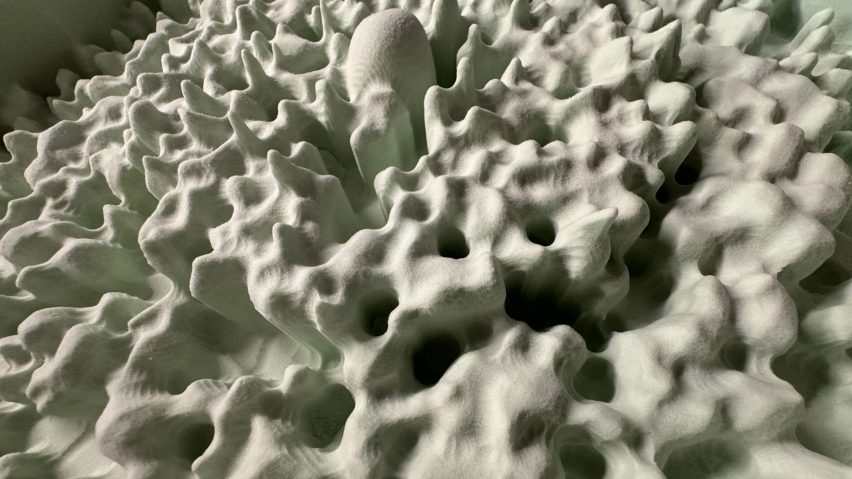
Ten fabrication and robotics projects by New York Institute of Technology
Dezeen School Shows: a project involving the fusion of wood and mycelium is included in Dezeen's latest school show by students at the New York Institute of Technology.
Also included is a "hypothetical city" created via a combination of hand sketches and AI, and a project that explores the concept of chainmail.
New York Institute of Technology
Institution: New York Institute of Technology
School: School of Architecture and Design
Course: Master of Science, Architecture, Computational Technologies
Tutor: Fadhil Fadhil
School statement:
"The Master of Science in Architecture, Computational Technologies programme is a two-semester, 30-credit, post-professional master's degree programme at the New York Institute of Technology.
"It explores the intersection of architecture, technology and innovation, empowering students to shape the future of design and construction through cutting-edge research and practical application, thereby maximising their employability skills.
"At New York Tech, architectural education is not merely about acquiring knowledge; it's about honing skills by tackling increasingly complex design challenges that will define the architectural design field, taking on a more interdisciplinary and technologically oriented approach.
"Essential skills acquired in the programme in the first semester include coding, big data analysis, simulations, augmented reality, computational modelling, machine learning and artificial intelligence as they relate to architecture and sustainability.
"In the second semester, students participate in design studio activities, including digital fabrication, robotic construction systems, and the simulation and optimisation of materials.
"These skills culminate in the creation of 1:1 prototypes and installations, as well as real-world field experiences and professional settings, which may include international exhibitions such as the Venice Biennale and the Salone del Mobile in Milan.
"Nestled in the heart of New York City, along Broadway, and just steps away from Central Park and Columbus Circle, the New York Tech School of Architecture and Design is the only school of architecture and design in the New York area with fully accredited programmes in both architecture and interior design.
"As a result, the location of the programme provides students with an extraordinary opportunity to experience New York City as a dynamic urban living lab.
"New York Tech graduates form the largest network of licensed architects in New York State, offering an invaluable source of mentorship, guidance and abundant employment opportunities."
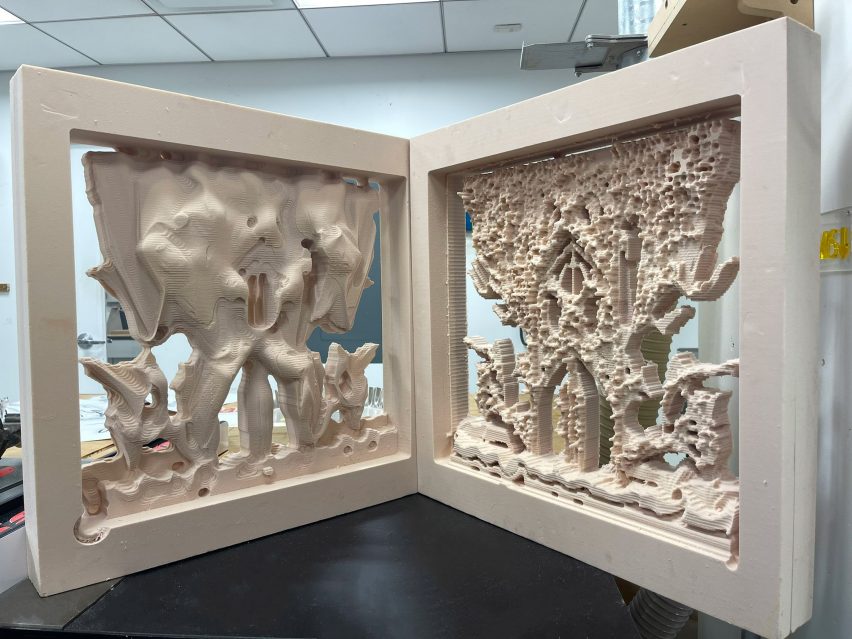
Image 3D Fabrication by Tharoonaskar Baskaran and Arathi Chilla
"Each Foam CNC milled high-density panel shows an unorthodox workflow that documents and creates a three-dimensional portable, adaptable and sustainable facade screening device from a two-dimensional AI-generated image.
"The project explores a possible scenario of advanced computational design and fabrication techniques unravelling the possibilities that emerge from a purely two-dimensional AI-generated image.
"The model shows the same AI-generated image realised through two different digital modelling and fabrication techniques. The pieces are made from high-density foam."
Students: Tharoonaskar Baskaran and Arathi Chilla
Course: Fabrication and Robotics
Tutor: Fadhil Fadhil
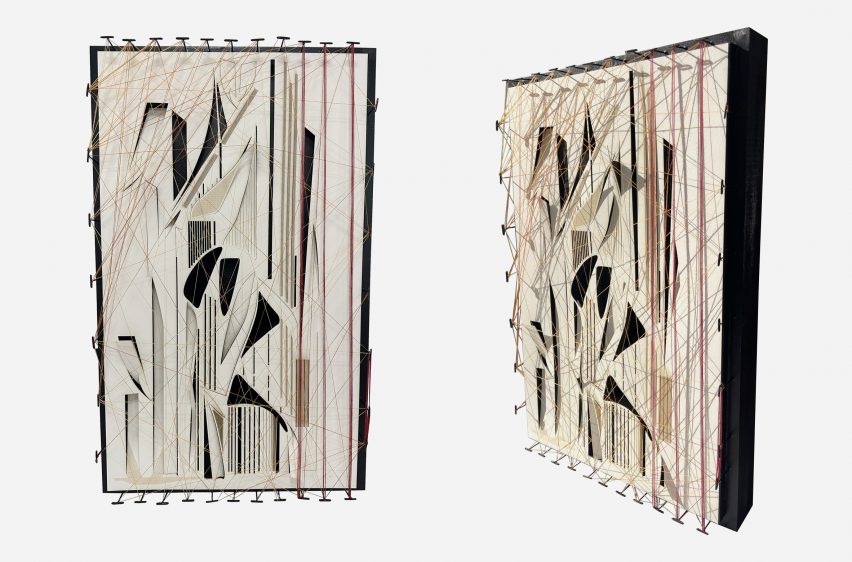
Fragmented City by Mahima Kulkarn
"The product resembles a hypothetical city that is designed through the negotiation of hand sketches, painting, AI images and multimedia fabrication process.
"The city fragments are expressed through the lines, the masses and strings. The piece is made from PLA 3D printing, milled MDF, laser cut museum board, metal pins and string."
Student: Mahima Kulkarn
Course: Fabrication and Robotics
Tutor: Fadhil Fadhil
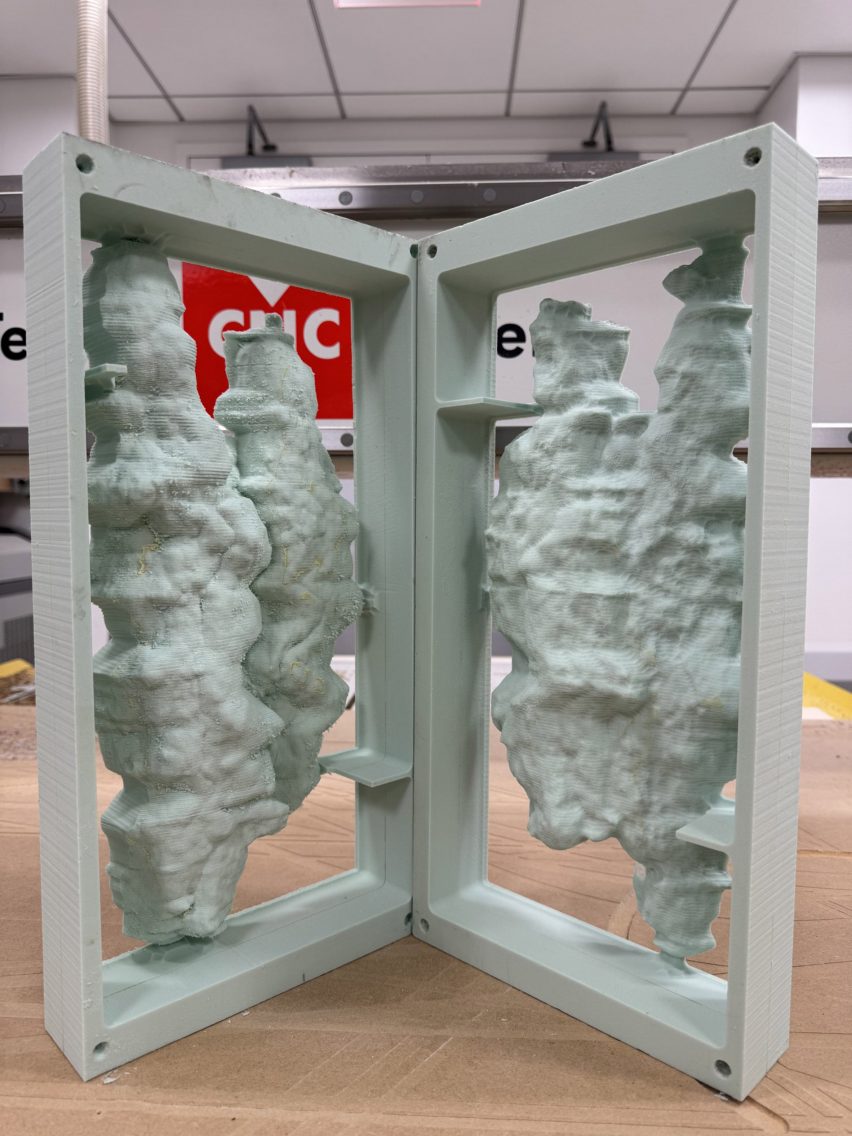
Resolution Through Fabrication by Mike Saad
"CNC milled high-density foam panels explore the idea of 'resolution through fabrication' as the primary topic within the course of robotics and fabrication.
"The process transforms similar geometries or forms into fully fabricated objects with different texture resolutions based on multiple fabrication variables such as toolpath densities, mill bits types and tool sizes.
"The project explores the concept of 3D resolution through CNC milling emphasising the fabrication variables showcased through geometry, tool paths and tool bits.
"Different combinations of these variables unpack variations of surface finishes while maintaining the autonomy of the original geometry input."
Student: Mike Saad
Course: Fabrication and Robotics
Tutor: Fadhil Fadhil

Chainmail 3D Printing by Karan Patel
"The project explores the concept of chainmail, which utilises the aggregation of small objects linked through flexible interlocking connections. Such an approach allows the generation of flexible fabric effects from the accumulation of 3D printing solid objects.
"Practically, the final product could function as a flexible facade or structural system. The piece is made from 3D printed polylactic acid filament."
Student: Karan Patel
Course: Fabrication and Robotics
Tutor: Fadhil Fadhil
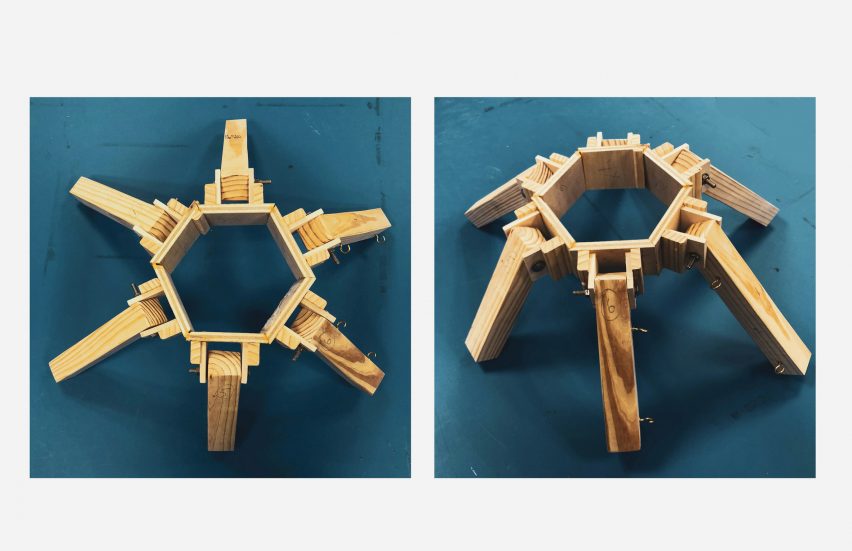
Geodesic Dome Kinetic Structures by Jahan Selim
"This project envisions a geodesic dome structure with a central hinge connection that allows for rotational flexible movement. The node design is crucial as it remains the most fixed piece in the system.
"The prototype explores the idea of kinetic structures that host flexible fabrics as a stretchable infill between the armatures."
Student: Jahan Selim
Course: Fabrication and Robotics
Tutor: Fadhil Fadhil
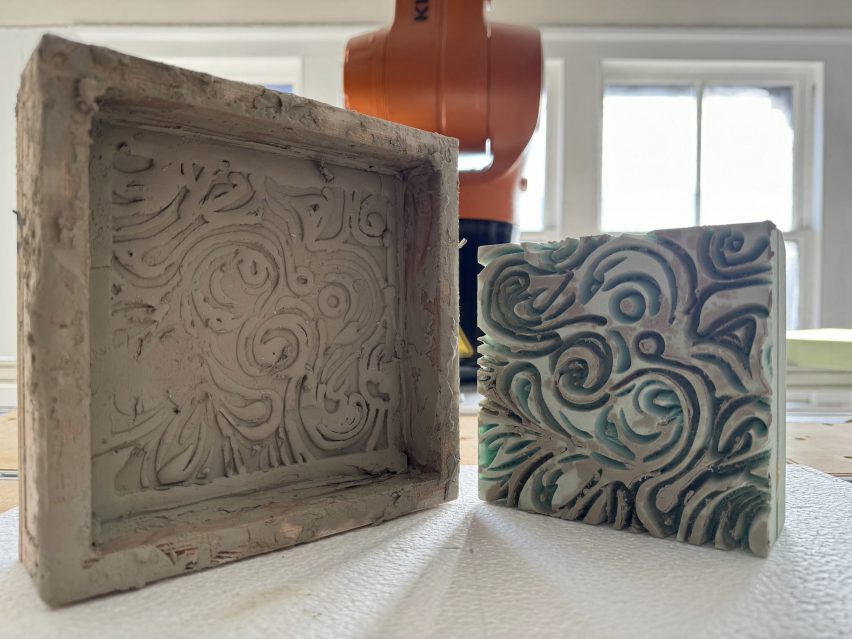
Robotic Clay Stamping by Amisha Bavadiya
"This prototype explores the concept of 3D robotic stamping. In this case, clay is used as the relief material that receives the stamp while being contained within a wooden mould.
"The patterns used to stamp the clay are fabricated on a high-density foam material using 2D CNC profiling operation."
Student: Amisha Bavadiya
Course: Fabrication and Robotics
Tutor: Fadhil Fadhil
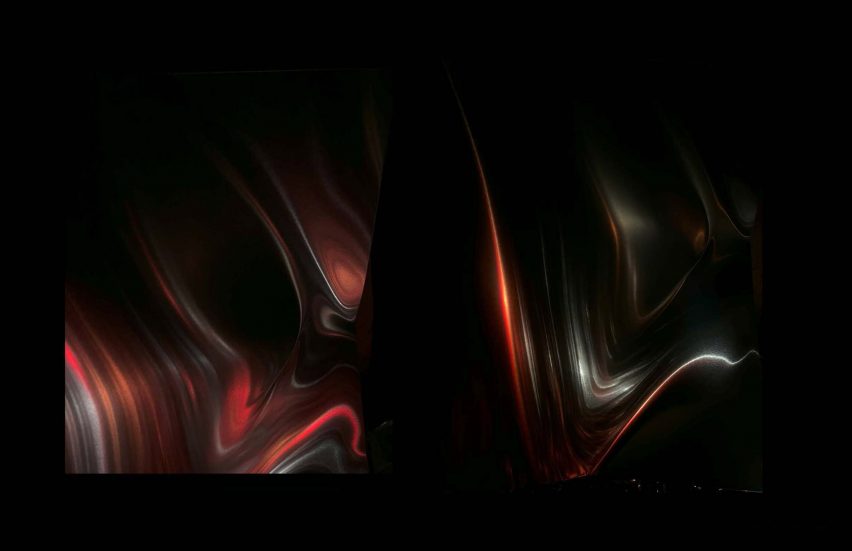
Shadow Reflection by Yashraj Chauhan
"This project resulted in images showing variations of light and shadow reflections on an aluminium sheet. The process underwent rigorous testing on multiple light conditions as they interact with metal sheets from multiple angles responding to particular metal folds.
"Prototype showing early exploration for a light installation that combines both light and shadow interactions with the folded aluminium sheets."
Student: Yashraj Chauhan
Course: Fabrication and Robotics
Tutor: Fadhil Fadhil
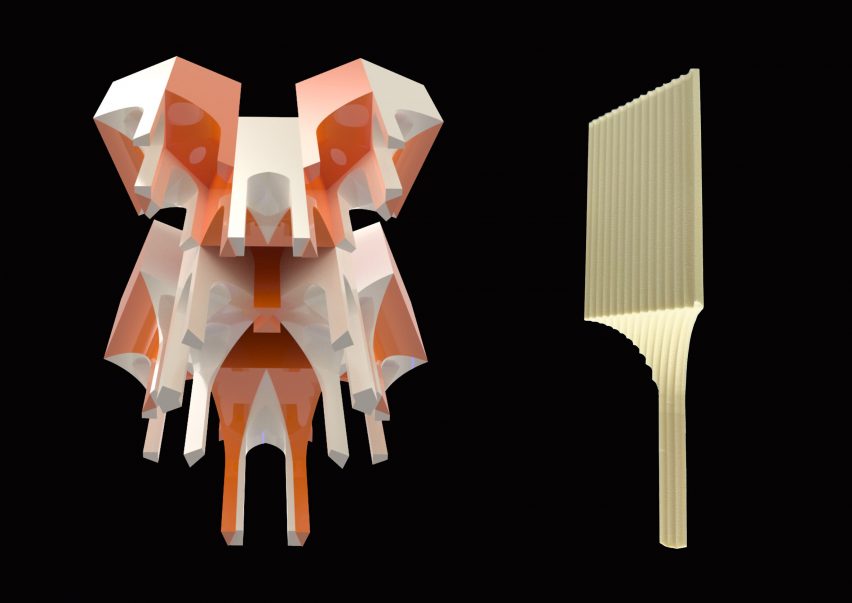
Muqarnas through Robotic Wire Cutting by Arefin Chisty
"This project culminated in a series of prototypes showing a reenvisioned process of producing the traditional components of Muqarnas architecture using CNC milling and robotic wire cutting.
"The project explores prototypes that are produced using minimal surface hot wire cutting operations producing multiple variations of similar Muqarnas geometries.
"It is an attempt to revive the lost historical craftsmanship through utilising the current highly advanced computational design and robotics fabrication tools."
Student: Arefin Chisty
Course: Fabrication and Robotics
Tutor: Fadhil Fadhil
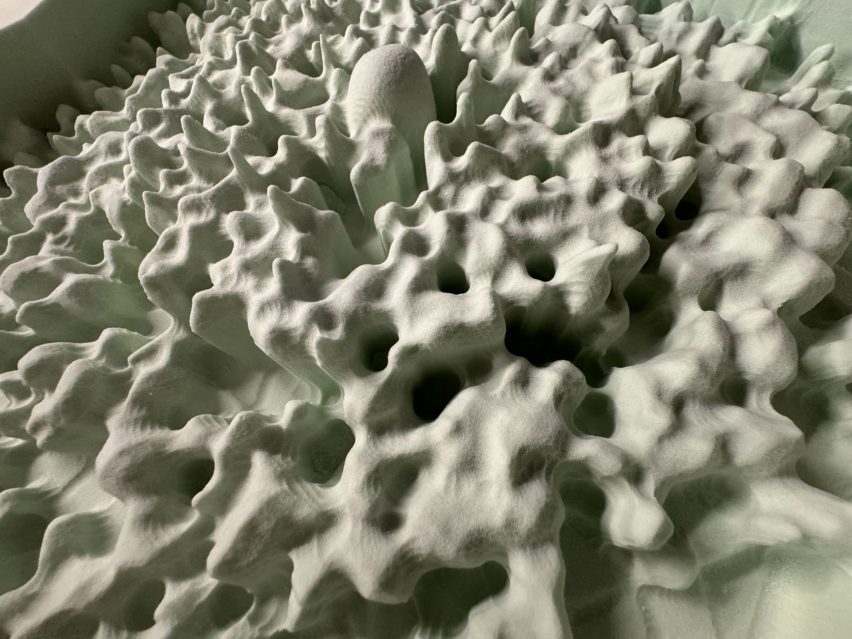
Urban Densities through CNC milling by Alejandro Romero
"The outcome of this project is a high-density foam model showcasing different urban densities of a hypothetical city. The design process utilises fabrication methods such as CNC milling to reimagine the digital model through different CNC tools and tool path densities.
"The project is an attempt to merge urban design with digital design and robotics fabrication.
"The project closely examines urban variables such as urban densities, circulation paths and volumes to redefine them as fabrication variables that can effectively contribute to the design evolution of urban scenarios.
"Such an approach challenges the conventional urban design strategies while introducing digital fabrication as an urban design methodology rather than a final production tool."
Student: Alejandro Romero
Course: Fabrication and Robotics
Tutor: Fadhil Fadhil
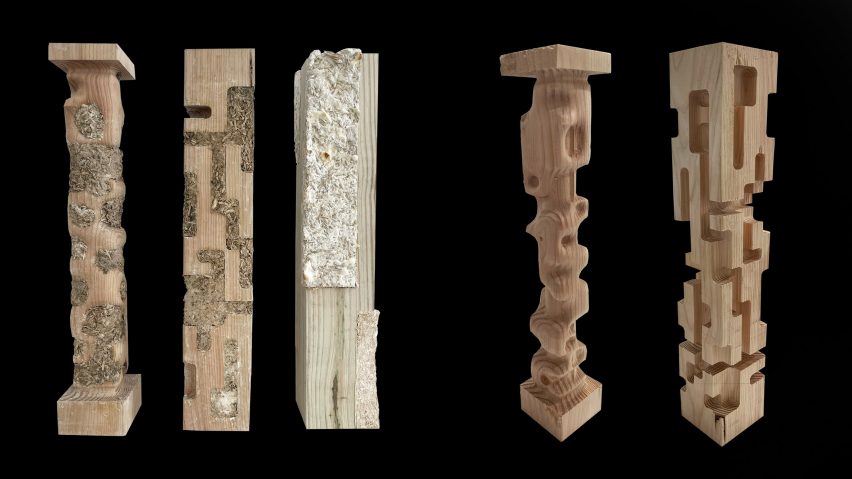
Future Materiality by Beken Amde and Tiarnan Mathers
"This structure explores the future of materiality by combining two materials – the first being mycelium as a biomaterial and the second being natural wood material.
"The wood structures, in this case, act as the formwork that hosts the mycelium aggregate.
"The project explores a merge of digital fabrication methodology hybridisation, a high tech fourth axis milling technique with a low tech production of mycelium infused artefacts. It is made from milled wood blocks infused with mycelium."
Students: Beken Amde and Tiarnan Mathers
Course: Fabrication and Robotics
Tutor: Fadhil Fadhil
Partnership content
This school show is a partnership between Dezeen and New York Institute of Technology. Find out more about Dezeen partnership content here.